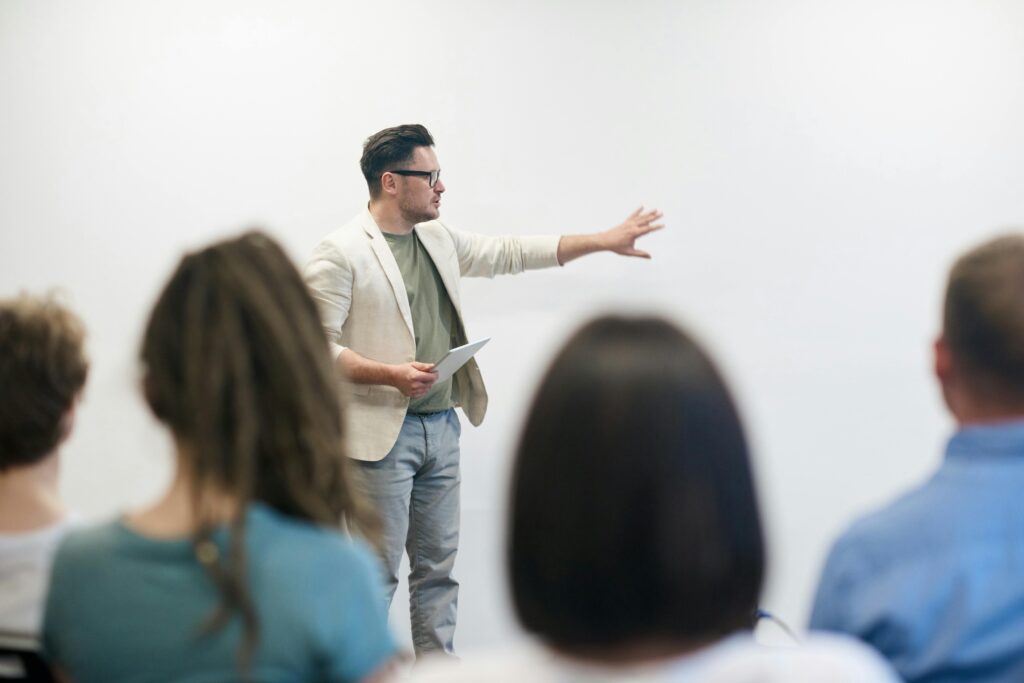“What is communication” How to communicate better
What is communication – The word communication has its root in the Latin verb communicare, which means ‘to share’ or ‘to make common’. Communication is usually understood as the transmission of information.
We are taking about verbal and Non-verbal communication here. Let’s observe two individuals talking, it means they are communicating, exchanging words, thoughts, ideas. The motive behind communication could be any, sharing knowledge, ideas, convincing, judging, sharing opinions and so on… Now, if the other person or “The you” is not listening, thoughts wandering, thinking about something else while one is talking, it is still communication, however, it will not be effective as either one is not paying full attention. Paying full attention is the key to communication, by doing this, you can answer clearly, effectively.
There also non-verbal communication that is happening at the same time. Verbal and non-verbal communication moves together; however, one only sees, focuses on the verbal communication, on what is being said. Non-verbal communication is equally important, so the whole is being communicated or understood, not the fragmented part of the whole. Non-verbal communication can happen when both the individuals have the same curiosity, seriousness, intensity when speaking or listening. When one pays full attention without any distraction or thoughts wandering, you will be able to see the whole of what is being communicated.
Listening plays a crucial role in communication, it goes hand-in-hand with communication. One has to completely pay full attention when communicating, if you are the speaker, you must pay full attention on how you are speaking, the words you use, your mental state of mind, your actions when speaking, when you are fully attentive, fully aware, you communicate clearly without any confusion and distortion. There will be complete clarity if you pay full attention when speaking.
Same is with listening, when you pay full attention without thoughts wandering, with seriousness, listen with complete heart and mind, you will see the whole truth, intention of the verbal and non-verbal that is being said. Will this full attentiveness when communicating, you will see the actual, the “what is” “the Truth” behind what is being said. And, when you see the whole, the “actual” you will be able to take complete action. That action you take in this state if mind is the total action as you have seen the whole not the fragment part of the whole thing of what is being said.
You don’t need to be a scholar or highly educated to communicate clearly, one has to just pay full attention when speaking and listening. With full attention, you will be able to talk, see and hear clearly and your action will be the right action.
I am going talk about, how to pay full attention which is the key for communicating clearly.

How to communicate better/ How to pay full attention.
Pay full Attention– By paying full attention, it means being watchful when you are speaking, how you are speaking, what you are thinking when speaking- avoid thinking about anything else, only pay attention to what you are talking, observe it in your mind when talking, the words you are using and so on..Just be there, not anywhere else (mentally). When you do this, you will clearly communicate.
Curiosity – Be curious, it should be learning when you are speaking, one should learn something new every time, how you speak, be watchful, keenly observe yourself when speaking.
Serious – Be serious about the topic, let it be a small conversation with a friend or professional meeting. Being serious urges you to pay full attention. Casualness leads to causalities.
Listen actively– Goes without saying, when you are listening, pay full attention, let your thoughts not wander on other subjects. Focus only on listening to the speaker, let it be your friend, your spouse or colleague which will help you see the both the verbal and non-verbal thing that is being said.
If you keep at this, each time you communicate with you friend, spouse or in your professional environment, you must see the results, the clarity of your though and actions.
Adding the 7 C of communication for your information:
- Clear: The message should be clear and easy to understand. Avoid ambiguity and use simple, concise language to convey your point.
- Concise: Keep the message brief and to the point. Avoid unnecessary details or repetition that could distract from the main idea.
- Concrete: The message should be specific, definite, and vivid rather than vague or general. Use facts, figures, and examples to support your message.
- Correct: Ensure the message is free from errors, whether grammatical, factual, or contextual. Accuracy builds credibility.
- Coherent: The message should be logical and consistent. All points should connect and flow smoothly to make it easy for the receiver to follow.
- Complete: Provide all the necessary information required for the receiver to understand and take action. Answer the “who, what, when, where, why, and how” if applicable.
- Courteous: Be respectful, polite, and considerate of the receiver’s feelings and perspectives. Avoid language that could be offensive or disrespectful.

Additional insights and common knowledge on how to better your communication skills:
1. **Practice Active Listening**
- Pay full attention to the speaker without interrupting.
- Show interest through body language (e.g., nodding, maintaining eye contact).
- Paraphrase or summarize what the other person said to ensure understanding.
2. **Be Clear and Concise**
- Organize your thoughts before speaking or writing.
- Avoid using jargon or overly complex language.
- Get to the point quickly while providing enough context.
3. **Work on Nonverbal Communication**
- Maintain good posture and eye contact.
- Use gestures and facial expressions to reinforce your message.
- Be mindful of your tone of voice, as it can convey emotions and intentions.
4. **Develop Empathy**
- Try to understand the other person’s perspective and feelings.
- Acknowledge their emotions and respond with kindness and respect.
- Avoid making assumptions or judgments.
5. **Ask Questions**
- Ask open-ended questions to encourage deeper conversations.
- Clarify any misunderstandings by asking for more information.
- Show curiosity and interest in the other person’s thoughts.
6. **Improve Your Writing Skills**
- Practice writing clearly and concisely, whether it’s emails, reports, or messages.
- Proofread your work to avoid errors and ensure clarity.
- Use structure (e.g., bullet points, headings) to make your writing easier to follow.
7. **Adapt to Your Audience**
- Tailor your communication style to suit the person or group you’re addressing.
- Consider their level of knowledge, preferences, and cultural background.
- Adjust your tone and language accordingly.
8. **Be Confident**
- Speak with confidence, even if you’re unsure. Practice makes perfect.
- Avoid filler words like “um,” “uh,” or “like.”
- Prepare in advance for important conversations or presentations.
9. **Seek Feedback**
- Ask for constructive feedback from colleagues, friends, or mentors.
- Reflect on areas where you can improve and work on them.
- Be open to criticism and use it as a learning opportunity.
10. **Practice Public Speaking**
- Join groups like Toastmasters to practice speaking in front of others.
- Start with small audiences and gradually work your way up.
- Focus on engaging your audience and delivering your message effectively.
11. **Read and Learn**
- Read books, articles, or watch videos on effective communication.
- Learn from skilled communicators and observe their techniques.
- Stay informed about topics that interest you to have meaningful conversations.
12. **Be Patient and Persistent**
- Communication skills improve over time with consistent practice.
- Don’t be discouraged by mistakes—learn from them and keep trying.
- Celebrate small improvements and build on them.



